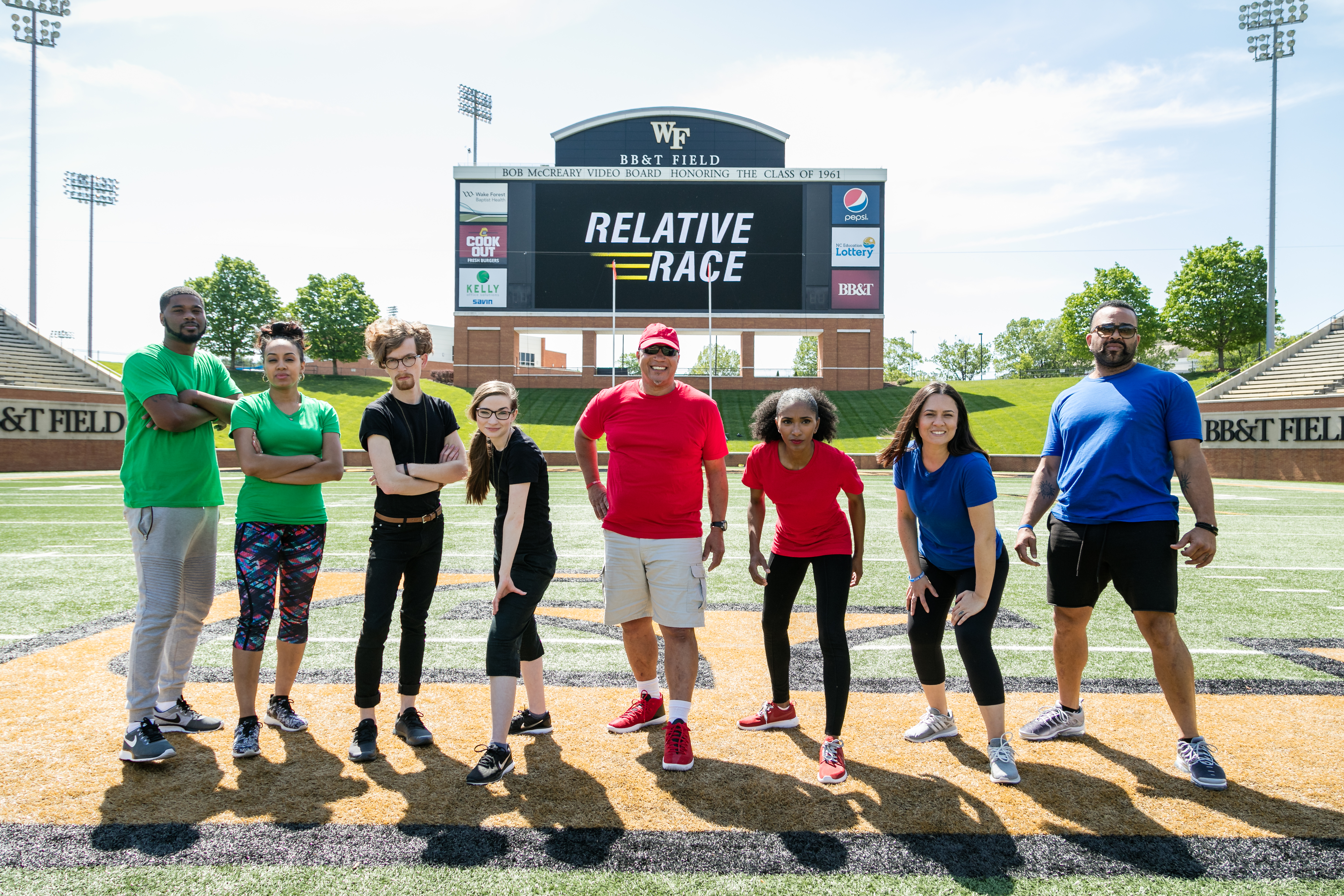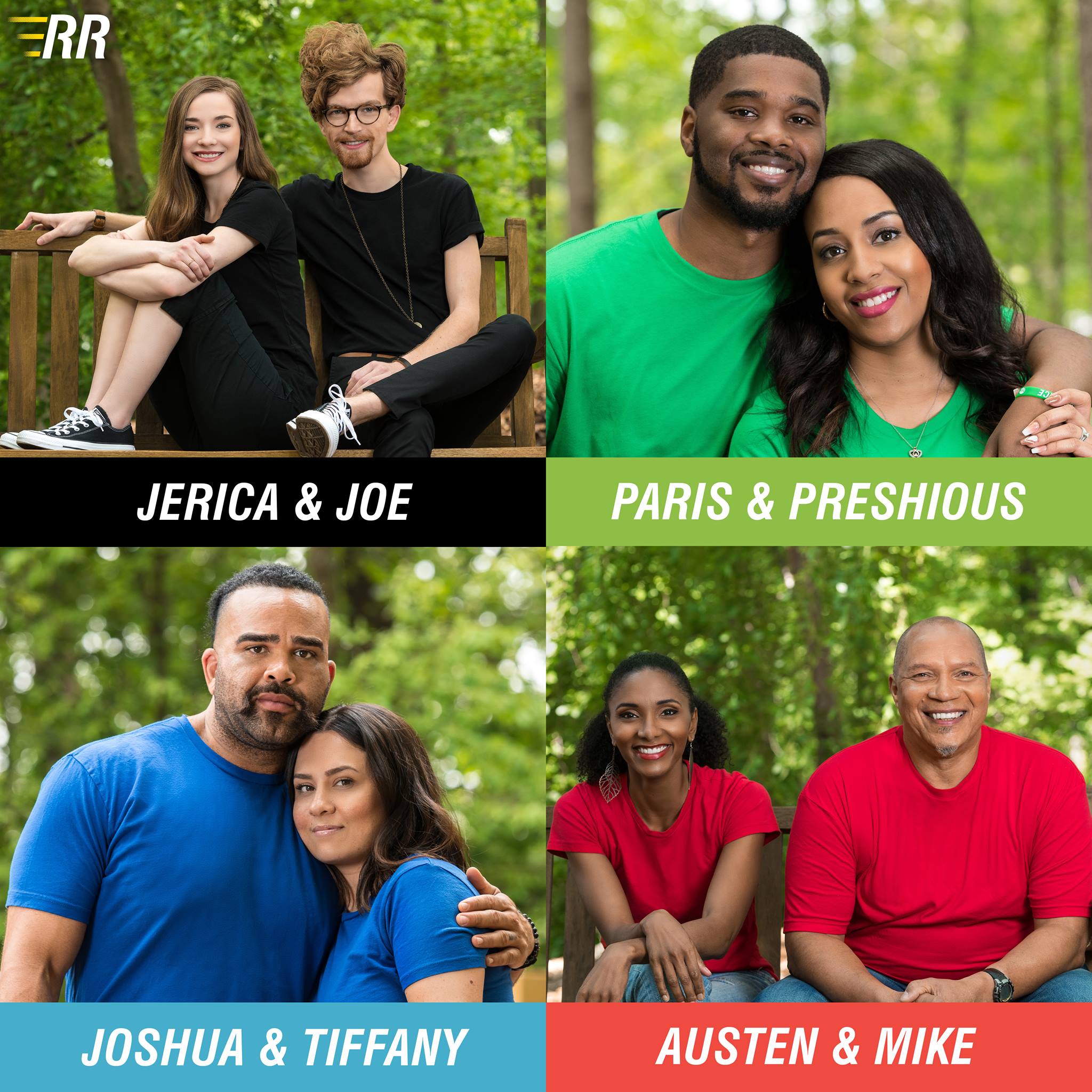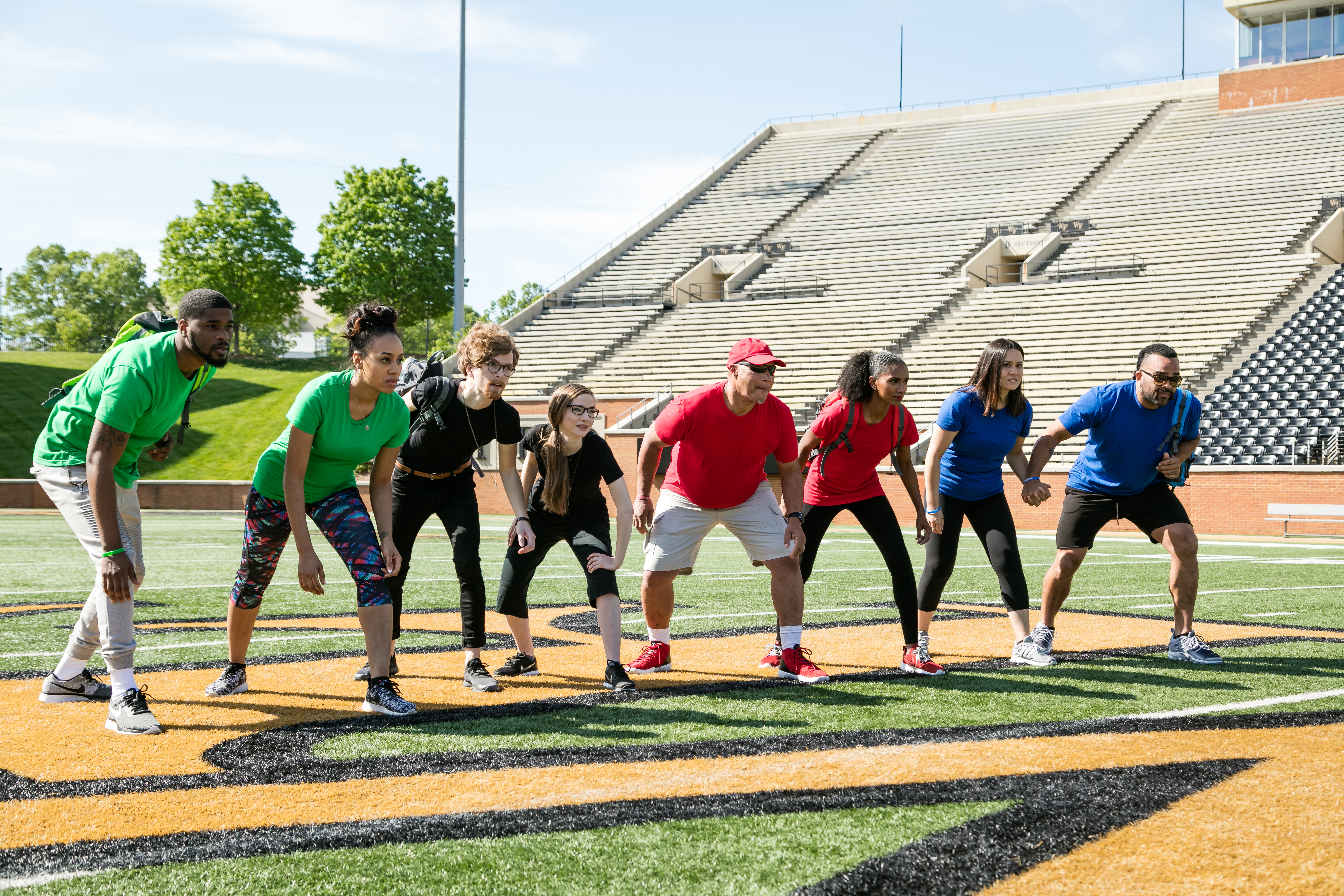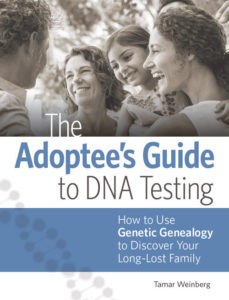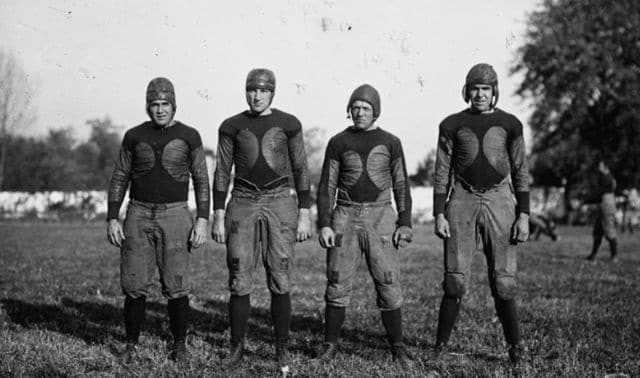Sign up for the Family Tree Newsletter! Plus, you’ll receive our 10 Essential Genealogy Research Forms PDF as a special thank you.
Get Your Free Genealogy Forms
"*" indicates required fields
A rising star in genealogy TV has caught our eye here at Family Tree Magazine. It’s not a new show, but it may be new to you, since it’s not on a major network like TLC or PBS. “Relative Race,” available free online and on the cable television network BYUtv, is a reality show that combines “Amazing Race”-style competition with genetic genealogy and emotional family reunions.
In each episode of “Relative Race,” close relatives work as teams to speedily navigate unfamiliar cities, complete challenges and discover new family members identified through DNA testing—some of them long-sought-after birth parents and siblings. The fastest team wins the $50,000 prize money in the big finale, but everyone gets to meet newfound family.
Season 4 kicked off Sept. 16 and you can catch it now for free on BYUtv (where you also can binge-watch previous seasons). We’ll introduce you to the teams and take you behind the scenes of this fast-paced and dramatic genealogy series.
The Starting Line
BYUtv approached Dan Debenham of the Salt Lake City-based production company Lenzworks, and now the host and executive producer of “Relative Race.”
“They’d been working with Ancestry to come up with a show that would help launch AncestryDNA,” Debenham recalls. The idea was for people to meet their relatives through DNA. “They asked us to refine this premise and we came up with what you know now as ‘Relative Race.’”
The show pits four, two-person teams (named for their shirt colors: green, black, red and blue) against each other in a 10-day race to meet relatives around the country who producers have identified through DNA testing. Each team receives a car that matches their team color, a stack of paper maps, a flip phone and a daily allowance.
The phone lacks GPS—contestants must use their maps and ask directions from the locals. Following prompts from producers, they drive to a new city every day and complete challenges as they make their way to their destination. That evening, they meet previously unknown kin—and stay overnight with them.
A team’s race clock stops when they snap a selfie with the new relative. The slowest team gets a strike, and three strikes knocks them out of the game (although they do get contact information for unmet relatives). Teams that survive to Day 10 compete in a final challenge to win $50,000 in prize money.
Choosing Contenders
From the first season in 2016, show producers decided to feature everyday people rather than celebrities, setting itself apart from TLC’s familiar series “Who Do You Think You Are?” and PBS’ “Finding Your Roots With Henry Louis Gates, Jr.”
“We agreed that it should just be people with really great stories that everyone at home can relate to,” Debenham says.
Casting calls issued online for each season draw hundreds of applicants. Some are adoptees seeking birth families. Some grew up without knowing their father, mother or siblings; or lost touch with extended family. Some simply want to know more relatives. (Interested? Keep an eye on the casting page.)
After two seasons with all married-couple teams, Season 3 added new teamwork dynamics with a pair of siblings and a father-son team. This change also meant that the relatives they met belonged to both team members.
During a three- to four-month selection process, production staff review applicants’ audition videos and delve into their DNA matches and family trees. That might mean building trees for applicants with compelling stories.
“We have four full-time genealogists who are truly incredible,” says Stephanie Dinsmore, the show’s general manager and senior producer. “We may send out DNA kits to 50 people, and these have been invaluable, too. Even if it’s just a cousin match we find, it helps us know more about mom’s side or dad’s side.”
Producers look for a range of stories, from serious to light-hearted, to offer viewers a variety of points for emotional connection.
“We ask ourselves, can we bring these stories out, or expand on their initial stories?” Debenham adds. “For example, maybe someone is looking for a birth mother. Maybe we can find their mother and three additional siblings they know nothing about. Then a compelling story becomes a really compelling story.”
A final attribute Debenham looks for in applicants is “televisionality.” They have “personalities that will pop and shine on the screen.”
Tip: Watch full episodes of “Relative Race” for free on the BYUtv website. BYUtv also is available via many cable and satellite services, as well as streaming apps; see here for more information.
Meet the Competitors
Team Black: Jerica and Joe
These fun-loving, millennial siblings from Cincinnati both work in the film industry, Joe as a producer and Jerica as a screenplay writer. They’re hoping to learn more about their paternal grand-father on “Relative Race.” If they win, they’ll use the prize money to fund their next feature film project.
Team Green: Paris and Preshious
This husband and wife team from Akron, Ohio, met during their freshman year at Kent State University. As a young child, Preshious was placed in foster care, and her foster mom adopted her around age 7. Now this trainer and mom of two hopes to meet relatives in her birth family. Paris, who works as a warehouse manager at Rubbermaid, wants to support Preshious throughout her journey.
Team Blue: Joshua and Tiffany
This adventurous married duo from Van Nuys, Calif., both want to discover more about their diverse heritage. Josh, an aspiring actor and artist who’s training in mixed martial arts, is searching for his African-American biological father’s family. Tiffany, who works in retail design and is finishing a master’s degree in social work, wants to explore her Filipino and Canadian lineage.
Team Red: Austen and Michael
Michael is a carpenter and former member of the naval submarine force. His daughter Austen, Mrs. America 2014, runs a nonprofit, a women’s ministry and her own consulting firm in their Charleston, SC, hometown. The team is searching for the family of Michael’s biological father.
Keeping Up with the Competitors
Let’s check in on fan favorite competitors from past seasons of “Relative Race”:
Season 3’s Michael Anderson (Team Blue) was a kid when he learned he was adopted. His adoptive mom died a year later, having burned the records that identified his birth parents. In a touching episode, he met his biological father, who was dying from kidney disease, as a “bonus relative” two weeks before the race began. Michael and his teammate, son Dylan, have since found themselves local celebrities and met even more relatives.
Season 3 viewers also may recall that Troy Hitt from Team Red and Jonathan Hoyt from Team Black were genetic cousins. After Hurricane Harvey hit, Team Black donated a portion of its $50,000 winnings to Team Red, whose home was severely damaged.
Hoyt’s wife, Rebecca, lost her mother at a young age; after her father was convicted of a crime, a paternal aunt raised her. A local news article describes her as “inseparable” from the maternal aunts and cousins she met on the show.
“Relative Race” radically changed life for Joe Greer (Season 2, Team Black). “It has given me the opportunity to explore relationships I had no idea existed. It has helped me repair and rebuild my idea of family and what I want for the future,” he says. Sadly, the father he met on the show passed away in June 2017.
Hitting the Road
The 10-day travel frenzy happens in real time. In the first two seasons, all teams followed a common route, from San Francisco to New York City in Season 1, and Miami to Boston in Season 2. They deviated from the route as needed to meet DNA matches, dealing with delays due to traffic, wrong turns and weather. Teams also had to stop for two daily challenges, such as an obstacle course or interactive quiz. They might spend six to nine hours on the road and not meet their relatives until late in the evening.
For Season 3 this past spring, producers streamlined the travel experience to give teams—and us viewers—more time with family discoveries. They gave each team a customized route beginning at a major airport near the first relative’s home and shortened daily driving. Teams could now get texts from each other and producers, too. Season 3 also introduced a daily team challenge inspired by the new relative’s interests or job, such as music or firefighting. Only after completing it would they receive their new relatives’ addresses.
During filming, camera mounts in team cars capture the contestants’ interactions, wrong turns, pleas for directions and discussions about their families. Contenders get to know each other, experience each other’s highs and lows, and offer spirited challenges or emotional support.
“Some became closer and some became more competitive,” Dinsmore says.
Once they’re finally at the doorstep of a DNA match, contestants have to navigate that first meeting. Cameras capture the excited, nervous, awkward and tender moments, where contestants hear, “I’m your cousin,” “I’m your mother’s sister” or even sweeter, “I’m your mother.”
Then teams can relax with their relatives over dinner and conversation. In earlier seasons, viewers saw relatives with still-undefined DNA matches trying to figure out their connection. This past season, we instead saw teams negotiate new relationships and get answers to lifelong questions about their families.
Each episode ends as the teams video conference with each other, exchanging competitive banter and celebrating family discoveries. They also learn who got the day’s strike and say their farewells to any departing team.
Off-Camera Drama
From the audition process through post-production, “Relative Race” has as much action behind the cameras as in front of them. Recruiting contestants’ DNA matches can take months of intense phone calls and emails as staff members help matches absorb sometimes surprising news. Producers must identify the best matches with the strongest stories and the most workable locations. Finally, they must persuade those matches to meet their previously unknown relatives on-camera and host them overnight.
“Sometimes we literally sift through thousands of relatives just to pick the nine relatives they have the potential to meet,” Debenham says. They also have to keep “backup relatives” on deck in case any drop out or become unavailable for filming on the day they’re needed.
That happened in Season 3, when Hurricane Harvey beat the Green Team to the Houston area. Their relative was stranded in a home surrounded by floodwaters. At the last minute, a “backup relative” flew from California to meet the team and together they Skyped the housebound relative. Meanwhile, Team Red—whose own hometown was being hit by Harvey—drove to Brookings, Ore., beneath the haze of the enormous Chetco Bar wildfire. Their overnight stay with that relative occurred under constant threat of evacuation.
The hurricane and wildfire became part of the on-camera story. Other times, production crews work quickly to reschedule or restage plans, leaving viewers none the wiser. “These kinds of things happen on an almost daily basis with at least one of our teams,” Debenham says. He tells of a planned event in New Orleans in which the venue canceled with less than a day’s notice. “We spent the next several hours planning something meaningful for the family to do together,” he recalls.
Looking for living relatives? Launch your search with these five tools!
The doorstep encounters and family evenings also keep camera crews on their toes. Producers work to prepare the relatives for those intense moments. “Every person is different and has sensitivities and you have to help coach them,” Dinsmore says. “They’re sometimes experiencing very personal things on-camera.”
The crew rehearses camera placement, lighting and action ahead of time. But when long-lost relatives finally meet, emotions drive what happens next. “That’s all unscripted, Debenham says. “We never cut them during their initial meetings.” Camera operators often find themselves scrambling to best capture the experience.
“Imagine someone who’s been looking for a mother or father their entire lives,” adds Debenham. “Then on Day 3 or 4, when they’re physically and emotionally exhausted, they find out their father has passed away. We have to capture that in the most careful, dignified way possible. We’re not interested in making people look bad or having a ‘gotcha’ moment. So sometimes it’s a careful, thoughtful and supportive dance.”
After filming ends, editing begins. “We edit three shows at once with seven full-time editors,” Debenham says. “We have to keep track of the story: How does the story in Episode 1 continue over to Episode 3?” Important aspects of the narrative that get cut from film must be inserted through audio narrative recorded at a later date. As host, Debenham reviews the footage so his voice-overs feel consistent with the events and emotions he’s narrating.
Connecting with Viewers
“I like “Relative Race” because it’s real people instead of celebrities, and you can follow along their journey over several episodes,” says Jeannette Sheliga, a family historian from Lockport, NY. Sheliga started with Season 3, then went back and watched every episode online.
“I really like seeing the emotions of the contestants, the peace it seems to bring to them to have answers to questions that have weighed heavily on them,” she adds. “I also like that you can enjoy it with non-genealogists. … It has this ‘Amazing Race’ kind of aspect to it.”
“I really love Season 3,” says Ari Wilkins of Dallas. “Normally I’m not emotionally wrapped up in the stories, but this season I was. The storylines were so moving because of the adoptions and the one who suspected her father had killed her mother.”
She remembers the bittersweet moment when the sisters on Team Green struck out. “I thought it was special how they said, ‘We don’t have as much to lose as others; we have what we need already.’” The sisters weren’t participating to look for potentially life-changing answers about their family; they just wanted to meet more relatives.
Kids get drawn into the drama, too. Grace Wilde, a 13-year old from Ohio who has watched every episode, roots for her favorite team each season. The second of seven children, she’s begun to understand how it might feel growing up not surrounded by close kin. “I feel like it would be hard, like there would be a missing piece in my life,” she says.
Sheliga and Wilkins, both genealogists, wish that DNA matches the show identifies only as “cousins” would get more clarification. Wilkins wants to see more time spent on genealogical connections and maybe some ancestor stories, though she admits the show formula is just about right for non-genealogy watchers. She also wishes Season 3 had explored the African- American team’s feelings about meeting white relatives, and whether the man on Team Red was surprised to meet Hispanic relatives.
To Dinsmore, viewer feedback shows the audience connects with “Relative Race.” She once heard from a viewer who’d been estranged from her son.
“After watching our show, she reached out to him. To think ‘Relative Race’ inspired her to do that was so rewarding.”
She and Debenham credit the show’s popularity with its theme: “At its core is something everybody can relate to: the importance of family. That’s why I think it resonates with so many people from such different backgrounds.
“I’ve turned around to see my own crew members trying to keep it together,” Dinsmore adds. “Sometimes there’s not a dry eye on the team.”
Contributing editor Sunny Jane Morton watches “‘Relative Race” with her 12-year old daughter, Seneca. They dream of being a future Team Red.
Find your birth family with this The Adoptee’s Guide to DNA Testing.

